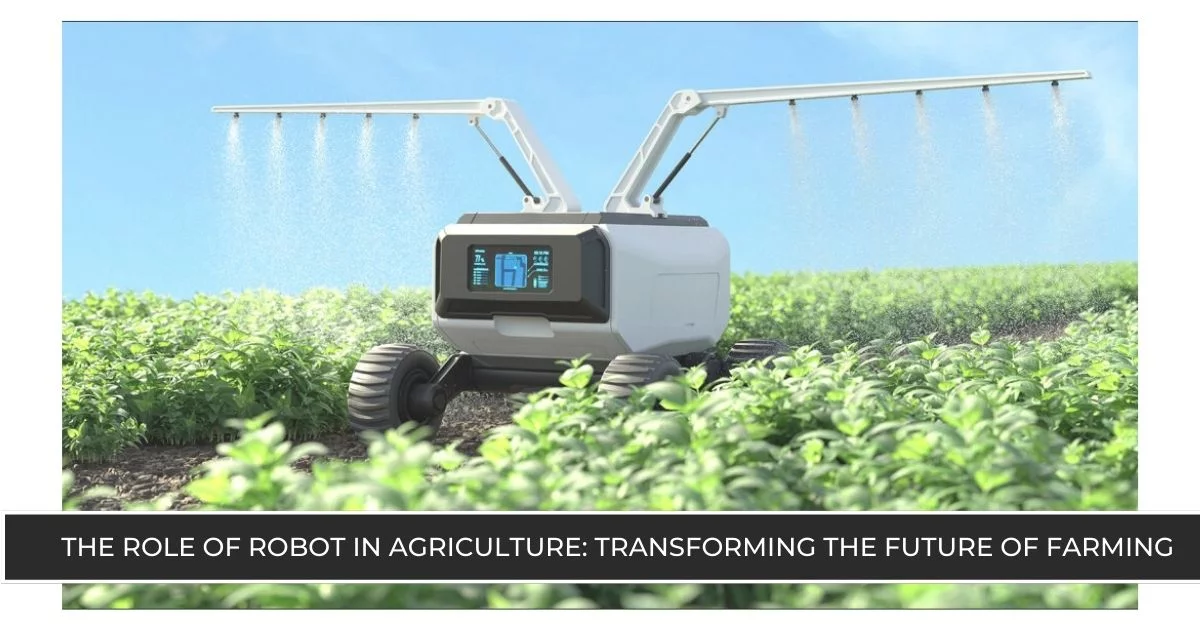The Role of Robots in Agriculture: Transforming the Future of Farming
Introduction
In recent years, technological advancements have revolutionized many industries, and agriculture is no exception. The introduction of robotics in agriculture is transforming traditional farming practices, increasing efficiency, precision, and sustainability. This blog post delves into the various applications, benefits, and future prospects of agricultural robotics, covering key topics and regional insights to provide a comprehensive understanding of this technological marvel.

Global Use of Robots in Agriculture
How Robots Are Used in Agriculture
Agricultural robots are employed in numerous ways to enhance farming productivity. From planting and harvesting to monitoring crop health and managing livestock, these robots perform tasks with unparalleled precision and consistency. Common applications include autonomous tractors, robotic harvesters, drones for aerial monitoring, and automated irrigation systems. These technologies help farmers optimize resource use, reduce labor costs, and increase yields.
How Robots Are Used in Agriculture in India
In India, a country with a rich agricultural heritage, robots are making significant strides. Agricultural robots in India are used for tasks such as sowing seeds, spraying pesticides, and harvesting crops. Companies like TartanSense and startups like Fasal are leading the way by developing innovative solutions tailored to the unique challenges faced by Indian farmers, such as small farm sizes and diverse crop types.
Agricultural Robots in the Philippines
In the Philippines, agricultural robots are being introduced to address labor shortages and increase productivity. Robots are used for planting rice, harvesting sugarcane, and even monitoring aquaculture. These technologies are particularly beneficial in the face of climate change, helping farmers adapt to new environmental conditions and maintain crop yields.
Agricultural Robotics in Japan
Japan, known for its technological prowess, is at the forefront of agricultural robotics. Japanese robots are used for precision tasks such as fruit picking, weeding, and rice planting. Companies like Panasonic and Kubota are developing advanced robots that can work in various terrains and crop conditions, thereby supporting the country’s aging farming population and enhancing productivity.
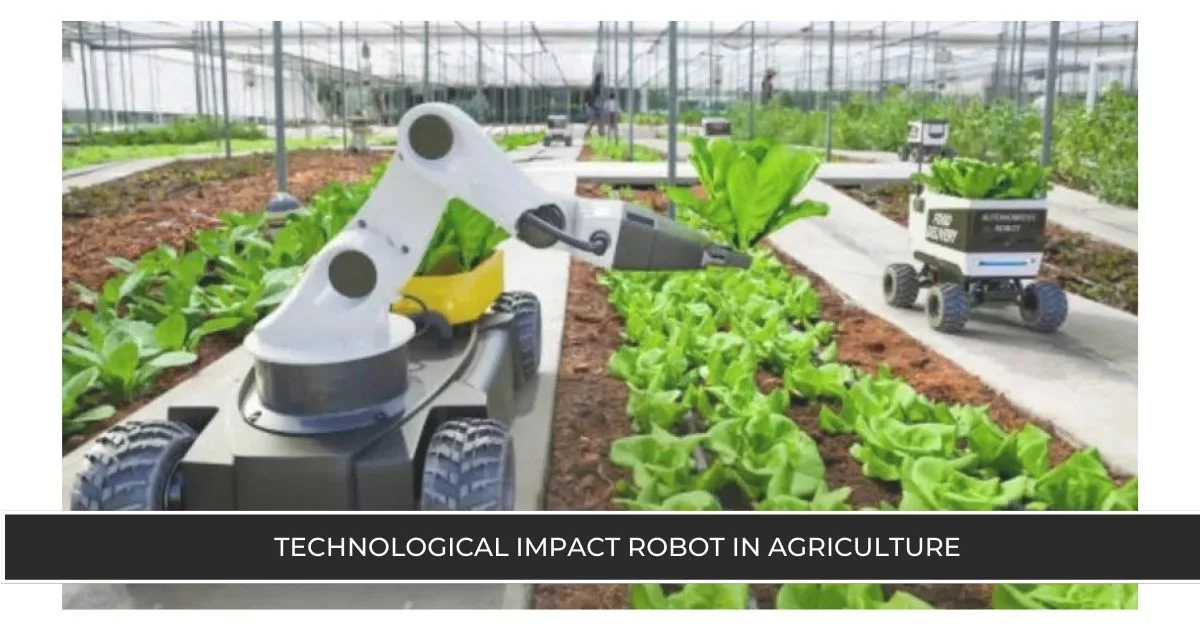
Technological Impact
How Has Robotics Changed Manufacturing Technology in Agriculture
The integration of robotics into agricultural machinery has revolutionized manufacturing technology. Automated systems streamline production processes, enhance precision, and reduce human error. Robots enable the mass production of customized farming equipment, improving efficiency and lowering costs. This evolution in manufacturing technology has made advanced agricultural tools more accessible to farmers worldwide.
Future of Robotics in Agriculture
The future of robotics in agriculture looks promising, with advancements in artificial intelligence (AI), machine learning, and sensor technology driving innovation. Future agricultural robots will likely feature enhanced autonomy, enabling them to perform complex tasks with minimal human intervention. Developments in AI will allow robots to learn from data, improving their performance over time and adapting to changing agricultural conditions.
Agriculture Robot in Future
Looking ahead, we can expect robots to play an even more integral role in agriculture. Innovations such as swarm robotics, where multiple robots work together to perform tasks, and the use of blockchain technology for tracking agricultural produce, are on the horizon. These advancements will further increase efficiency, traceability, and sustainability in farming practices.
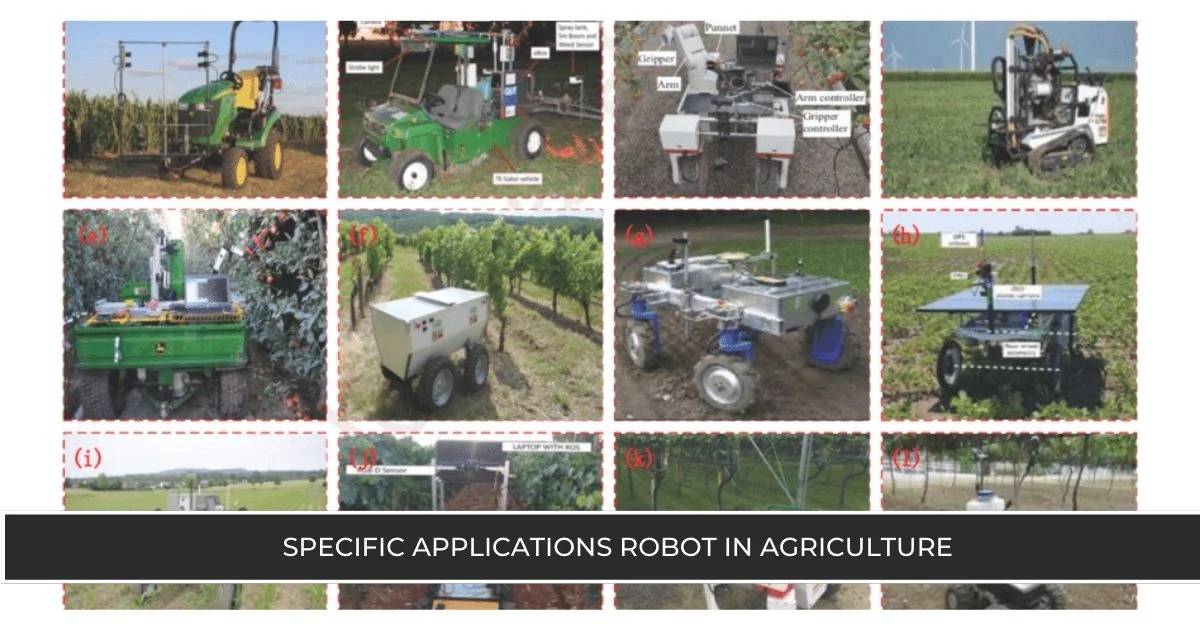
Specific Applications
Autonomous Robots in Agriculture
Autonomous robots are transforming agriculture by performing tasks such as planting, weeding, and harvesting without human intervention. These robots use advanced sensors and GPS technology to navigate fields, ensuring precise and efficient operations. Autonomous tractors, for example, can plow fields, sow seeds, and apply fertilizers, significantly reducing the need for manual labor.
Robotic Arm in Agriculture
Robotic arms are used in agriculture for tasks that require precision and delicacy, such as picking fruits and vegetables. These arms are equipped with sensors and AI algorithms to identify ripe produce and handle it carefully to avoid damage. The use of robotic arms increases harvesting efficiency and reduces waste, benefiting both farmers and consumers.
Mobile Robots in Agriculture
Mobile robots are versatile tools that can navigate various terrains to perform tasks like soil analysis, crop monitoring, and pest control. Equipped with cameras and sensors, these robots collect data on crop health and soil conditions, helping farmers make informed decisions. Mobile robots also assist in precision farming, applying fertilizers and pesticides only where needed, thus reducing environmental impact.
Robotics Startups and Innovations
How Robotics Startup Used in Agriculture
Robotics startups are driving innovation in agriculture by developing cutting-edge solutions to address specific challenges. Companies like Iron Ox and FarmWise are creating robots that automate labor-intensive tasks, such as weeding and harvesting. These startups leverage AI and machine learning to enhance robot capabilities, making them more efficient and adaptable to different farming environments.
5 in 1 Agricultural Robot
The concept of a 5 in 1 agricultural robot is gaining traction, offering multifunctional capabilities in a single machine. These robots can perform tasks such as plowing, seeding, fertilizing, weeding, and harvesting, reducing the need for multiple specialized machines. This multifunctionality not only saves costs but also maximizes land use efficiency.
5 in 1 Agricultural Robot Design in CATIA
Designing a 5 in 1 agricultural robot in CATIA, a leading design software, allows for the creation of detailed and precise models. CATIA helps engineers simulate and optimize the robot’s performance, ensuring it meets the diverse needs of modern farming. This design process includes considerations for durability, efficiency, and ease of use, making these robots practical for everyday agricultural operations.
![]()
Component Focus
How Motor Is Used to Move Plough in Agricultural Robot
Motors play a crucial role in the operation of agricultural robots, especially in moving plows. These motors convert electrical energy into mechanical energy, driving the plow through soil with precision. The type of motor used can vary, but electric and hydraulic motors are common due to their reliability and efficiency. Advanced control systems ensure the motor operates smoothly, adjusting to different soil conditions.
What Kind of Motor Used in Agricultural Robot
Agricultural robots typically use electric motors due to their efficiency, reliability, and ease of control. Brushless DC motors are popular choices because they offer high torque, low maintenance, and precise speed control. In some cases, hydraulic motors are used for their robustness and ability to generate high power, especially in larger machinery.
The History of Agricultural Robots: Evolution and Development
What Should Be Sensor Need to Be in Agriculture Robot
Sensors are critical components of agricultural robots, enabling them to perceive and interact with their environment. Key sensors include:
- LiDAR: For mapping and navigation.
- Cameras: For visual monitoring and crop health analysis.
- Soil Moisture Sensors: For irrigation management.
- Temperature and Humidity Sensors: For climate control in greenhouses.
- GPS: For precise positioning and navigation.
What Should in Body Part of Agricultural Robot
The body of an agricultural robot must be designed to withstand harsh field conditions while being lightweight and flexible. Key considerations include:
- Durable Materials: To resist corrosion and wear.
- Modular Design: For easy maintenance and upgrades.
- Protection for Electronics: To shield sensitive components from dust and moisture.
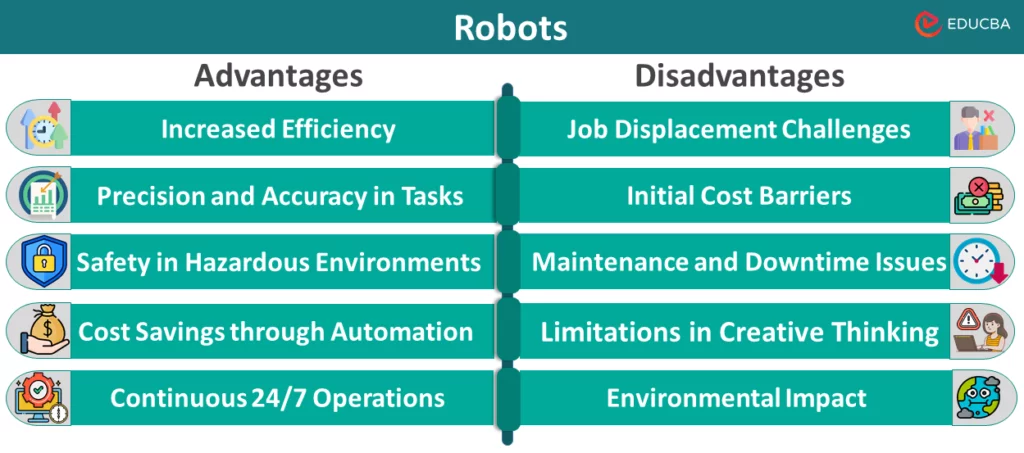
Advantages and Disadvantages
Advantages of Robots in Agriculture
The use of robots in agriculture offers numerous advantages, including:
- Increased Efficiency: Robots can work 24/7 without fatigue, significantly boosting productivity.
- Precision: Robots perform tasks with high accuracy, reducing waste and improving crop quality.
- Cost Savings: Automation reduces labor costs and operational expenses over time.
- Sustainability: Robots optimize resource use, minimizing environmental impact.
Disadvantages of Robots in Agriculture
However, there are also some challenges associated with the adoption of agricultural robots:
- High Initial Cost: The upfront investment for robotic systems can be significant.
- Technical Complexity: Farmers may require training to operate and maintain robots.
- Reliability Issues: Robots must be durable and reliable to withstand the rigors of agricultural work.
Research and Projects
Development of Climber Robot in Agriculture
Climber robots are being developed to navigate challenging terrains and perform tasks such as pruning and harvesting in orchards and vineyards. These robots can climb trees and vines, accessing areas that are difficult for traditional machinery to reach. The development of climber robots involves advanced engineering and AI to ensure they can operate safely and efficiently.
Line Following Robot in Agriculture
Line-following robots are used in agriculture to perform tasks like planting and weeding along predefined paths. These robots use sensors to detect and follow lines or rows, ensuring precise operations. They are particularly useful in greenhouse environments, where space is limited and precision is crucial.
Conclusion for Articulated Robotic Arm System in Agriculture
Articulated robotic arms offer numerous advantages in agriculture, including precision, flexibility, and efficiency. These systems are used for tasks such as fruit picking, sorting, and packaging. The future of articulated robotic arms in agriculture looks promising, with ongoing advancements in AI and sensor technology enhancing their capabilities.
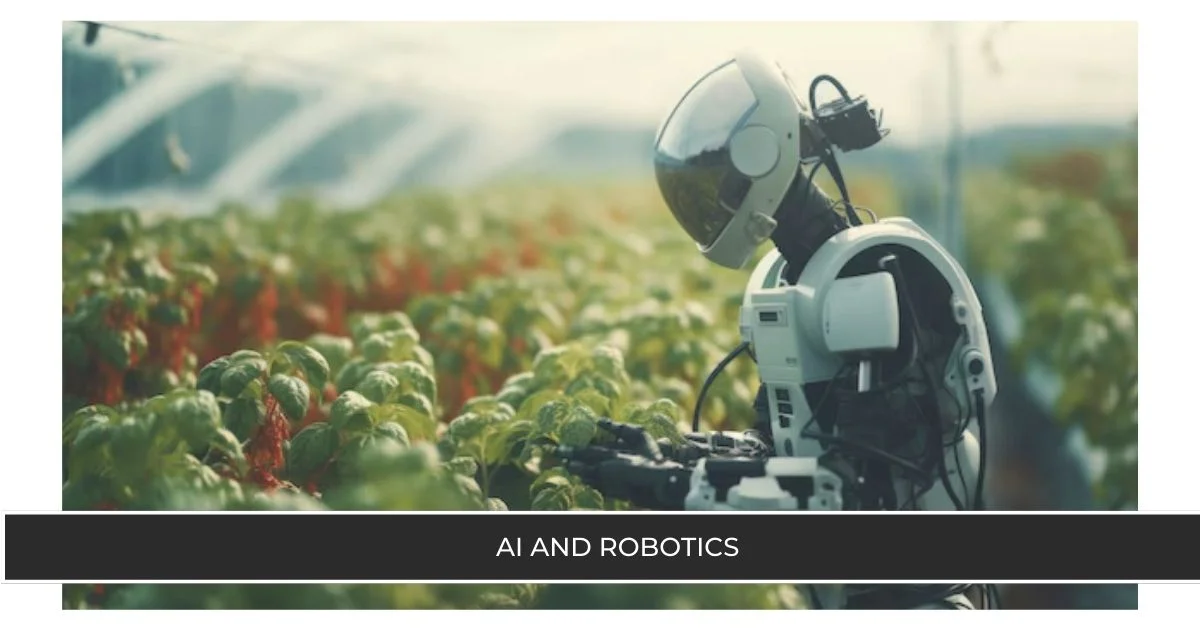
AI and Robotics
Artificial Intelligence Robotic in Agriculture PDF
The integration of AI in agricultural robotics is transforming the industry. AI enables robots to learn from data, improving their performance and adaptability. Applications include crop health monitoring, yield prediction, and automated decision-making. This combination of AI and robotics enhances efficiency, reduces waste, and supports sustainable farming practices.
Robotic Management in Agriculture Decision Making
Robots equipped with AI provide valuable insights for agricultural decision-making. They collect and analyze data on soil conditions, crop health, and weather patterns, helping farmers make informed decisions. This data-driven approach leads to better resource management, increased yields, and reduced environmental impact.
Resources and Additional Information
Robotics in Agriculture PDF
For those interested in a deeper dive into the subject, various comprehensive guides and resources are available in PDF format. These documents cover topics such as the design, implementation, and benefits of agricultural robotics, providing valuable information for farmers, researchers, and enthusiasts.
Robotic in Agriculture Project
DIY projects and case studies offer practical insights into the development and application of agricultural robots. These projects can range from simple line-following robots to complex autonomous systems, providing a hands-on understanding of the technology and its potential.
Historical and Analytical Perspectives
4 Ways Robotics Will Affect Agriculture in 2019
A historical perspective on how robotics was predicted to impact agriculture in 2019 can offer valuable insights into the progress made over the years. Key areas of impact include increased efficiency, precision farming, labor reduction, and enhanced sustainability. Analyzing these predictions helps understand the evolution and future trajectory of agricultural robotics.
Visual and Design Elements
5 in 1 Agricultural Robot 2D Design
Visual and design aspects are crucial for understanding the functionality and capabilities of agricultural robots. 2D designs and sketches provide detailed insights into the structure and components of multifunctional robots, helping farmers and engineers visualize and plan their use.
Robot in Agriculture Animation
Educational animations showcasing the applications of robots in agriculture offer an engaging way to learn about the technology. These animations demonstrate how robots perform tasks such as planting, weeding, and harvesting, highlighting their benefits and potential.
Summary and Future Outlook
The integration of robotics in agriculture is revolutionizing the industry, offering numerous benefits in terms of efficiency, precision, and sustainability. As technology continues to advance, the role of robots in farming will only become more significant. By embracing these innovations, farmers can ensure a more productive and sustainable future for agriculture. The future holds exciting possibilities, and staying informed about these developments is crucial for anyone involved in or interested in modern farming practices.
